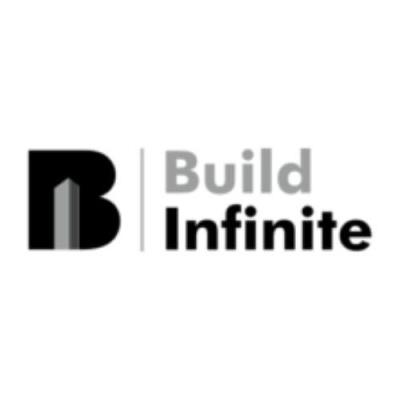In the fast-evolving world of construction and building design, precision and planning are critical to success. One of the most essential elements in HVAC (Heating, Ventilation, and Air Conditioning) system design is ductwork, which directly affects a building’s airflow, comfort, and energy consumption. When it comes to accurate and efficient duct installation, ductwork shop drawing services play a pivotal role in ensuring that every component fits and functions exactly as intended.
These detailed drawings act as a roadmap for engineers, fabricators, and installers, ensuring the ductwork system aligns perfectly with the building's architectural, mechanical, and structural elements. In this blog post, we'll explore what ductwork shop drawings are, their key components, their unmatched benefits, and why outsourcing these services to professionals can save valuable time, reduce cost, and eliminate critical errors.
What Are Ductwork Shop Drawings?
Ductwork shop drawings are precise, project-specific, and scaled representations of HVAC duct systems that are designed for on-site fabrication and seamless installation. Unlike basic construction drawings, these are custom-engineered diagrams that account for the unique architectural and mechanical specifications of a particular building project, ensuring smooth execution during the construction phase.
They typically include:
-
Detailed layouts of supply, return, exhaust, and ventilation ducts
-
Exact dimensions and scaling to match site requirements and space limitations
-
Elevation and section views for better understanding of vertical and horizontal alignment
-
Placement of fittings, dampers, grilles, diffusers, and air terminals
-
Coordination with other MEP systems (mechanical, electrical, plumbing) to prevent clashes
-
Clear labeling and technical notes for the fabrication and installation teams
These drawings are created using advanced CAD (Computer-Aided Design) and BIM (Building Information Modeling) tools that ensure absolute accuracy and clarity in design communication.
Importance of Ductwork Shop Drawing Services
A minor error in duct placement can result in serious consequences such as airflow disruption, reduced system performance, increased energy bills, or even complete HVAC failure. Here’s why ductwork shop drawing services are essential in today’s construction landscape:
1. Accuracy in Fabrication
With shop drawings, fabricators receive exact dimensions, angles, and specifications. This minimizes errors during cutting or assembly, reduces material wastage, and ensures each duct piece is crafted to fit perfectly on-site without needing modifications or rework.
2. Improved Project Coordination
Ductwork frequently competes for limited ceiling or wall space with other building systems like plumbing, fire sprinklers, and electrical conduits. Shop drawings help visualize all system paths in a single integrated plan, allowing architects and engineers to detect and resolve potential clashes in advance.
3. Faster Installation
Installers benefit from detailed, easy-to-follow diagrams that clearly indicate where each duct section, joint, and fitting should go. This removes guesswork from the installation process, speeds up workflow, and helps meet tight project deadlines with fewer bottlenecks and less supervision.
4. Code Compliance
HVAC systems must comply with international and local building regulations, fire codes, and energy efficiency standards. Ductwork shop drawings ensure that the installed system follows all required guidelines for airflow, insulation, clearances, and fire-rated assemblies, avoiding costly non-compliance penalties.
5. Cost Savings
By reducing design flaws, material waste, site modifications, and project delays, shop drawings help optimize the construction budget. Accurate planning translates to fewer change orders, less downtime, and better use of resources across the project lifecycle.
Read more: MEP Design Company: Backbone of Building Systems
Key Components of a Ductwork Shop Drawing Package
A comprehensive ductwork shop drawing service includes a variety of critical elements that support accurate installation, coordination, and fabrication:
-
Plan Views: Horizontal layouts of ductwork systems at each building level, showing duct routes, sizes, and connections
-
Section Views: Vertical or cross-sectional diagrams that reveal duct paths through different building floors or ceiling cavities
-
Detail Drawings: Enlarged views of complex duct transitions, fittings, or custom connections for clarity and fabrication guidance
-
Schedules: Tables listing duct sizes, shapes, materials, air volumes, and component specifications such as dampers and diffusers
-
3D BIM Models (optional): Interactive 3D models used for enhanced coordination, virtual walk-throughs, and advanced clash detection
These documents help ensure nothing is left to chance and that every piece of ductwork is accounted for before arriving on-site.
Industries That Benefit from Ductwork Shop Drawings
Ductwork shop drawing services are valuable across a wide range of industries where HVAC system performance and reliability are paramount. These include:
-
Commercial buildings like shopping malls, office complexes, and hospitality venues that demand high airflow precision
-
Residential buildings such as villas, townhouses, and multi-storey apartments that require custom ductwork layouts for limited spaces
-
Industrial facilities like manufacturing plants, warehouses, and labs with unique air distribution and ventilation requirements
-
Institutional buildings including schools, hospitals, government offices, and universities that must meet strict safety and performance codes
Regardless of the industry, properly planned duct systems enhance energy efficiency, occupant comfort, and indoor air quality.
Why Outsource Ductwork Shop Drawing Services?
Outsourcing ductwork drawing services to professional design firms offers numerous advantages over handling them in-house. It ensures that your HVAC systems are not only efficient but also installed correctly the first time. Key benefits include:
-
Expertise and Experience: Professionals with deep HVAC knowledge understand how to optimize airflow and system efficiency
-
Scalability and Flexibility: Teams can be scaled up or down to meet project size and deadline requirements without compromising quality
-
Use of Cutting-Edge Software: Access to AutoCAD, Revit, Navisworks, and other top-tier tools enhances drawing precision and coordination
-
Cost Efficiency: Avoid overhead costs tied to hiring, training, and managing an in-house CAD or MEP team
-
Time Savings: Get fast turnarounds on shop drawings without the delays that come with internal resourcing constraints
By outsourcing, you gain reliable support that ensures timely delivery, high-quality drawings, and reduced construction risks.
What to Look for in a Ductwork Drawing Service Provider
Choosing the right ductwork shop drawing service provider is crucial for the success of your HVAC installation. Here’s what you should consider before making a decision:
-
Proven experience with HVAC and MEP systems in similar projects
-
Availability of sample work, case studies, or a strong project portfolio
-
Expertise with advanced CAD/BIM software and file formats
-
Ability to handle complex coordination with other building systems
-
Knowledge of local and international building codes and regulations
-
Positive client reviews, testimonials, and on-time project delivery records
Look for a team that combines technical expertise with a client-focused approach to deliver tailored solutions that meet your specific requirements.
Conclusion
Ductwork shop drawing services are no longer optional—they are essential in ensuring the success of modern construction projects involving HVAC systems. These detailed and highly technical drawings offer clarity, reduce risks, and improve the accuracy of installation, fabrication, and system performance. By integrating advanced software, experienced professionals, and efficient workflows, these services streamline your project from concept to completion.
Whether you’re managing a small residential project or a complex commercial build, investing in quality shop drawings guarantees better results, fewer surprises, and long-term savings.
Also read: Point Cloud Data to 3D Model Services









Share this page with your family and friends.